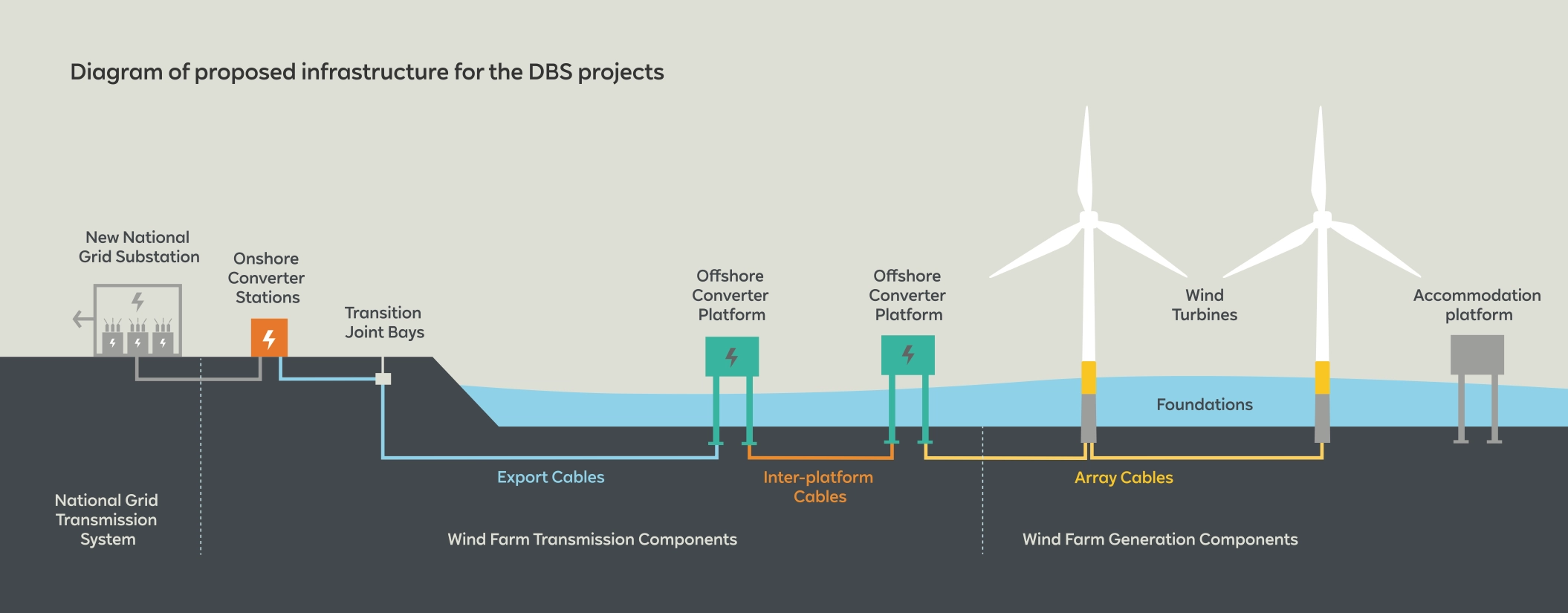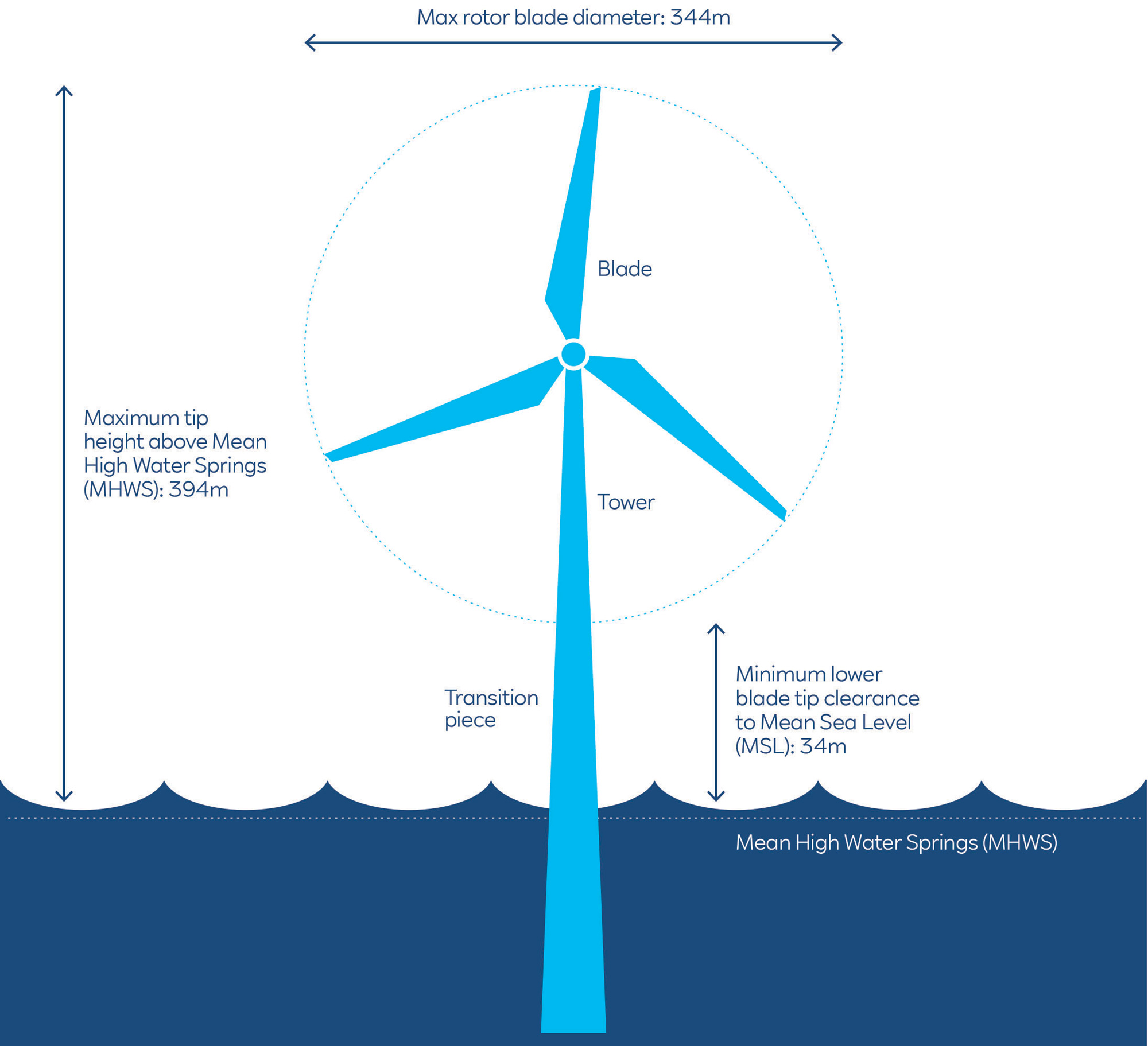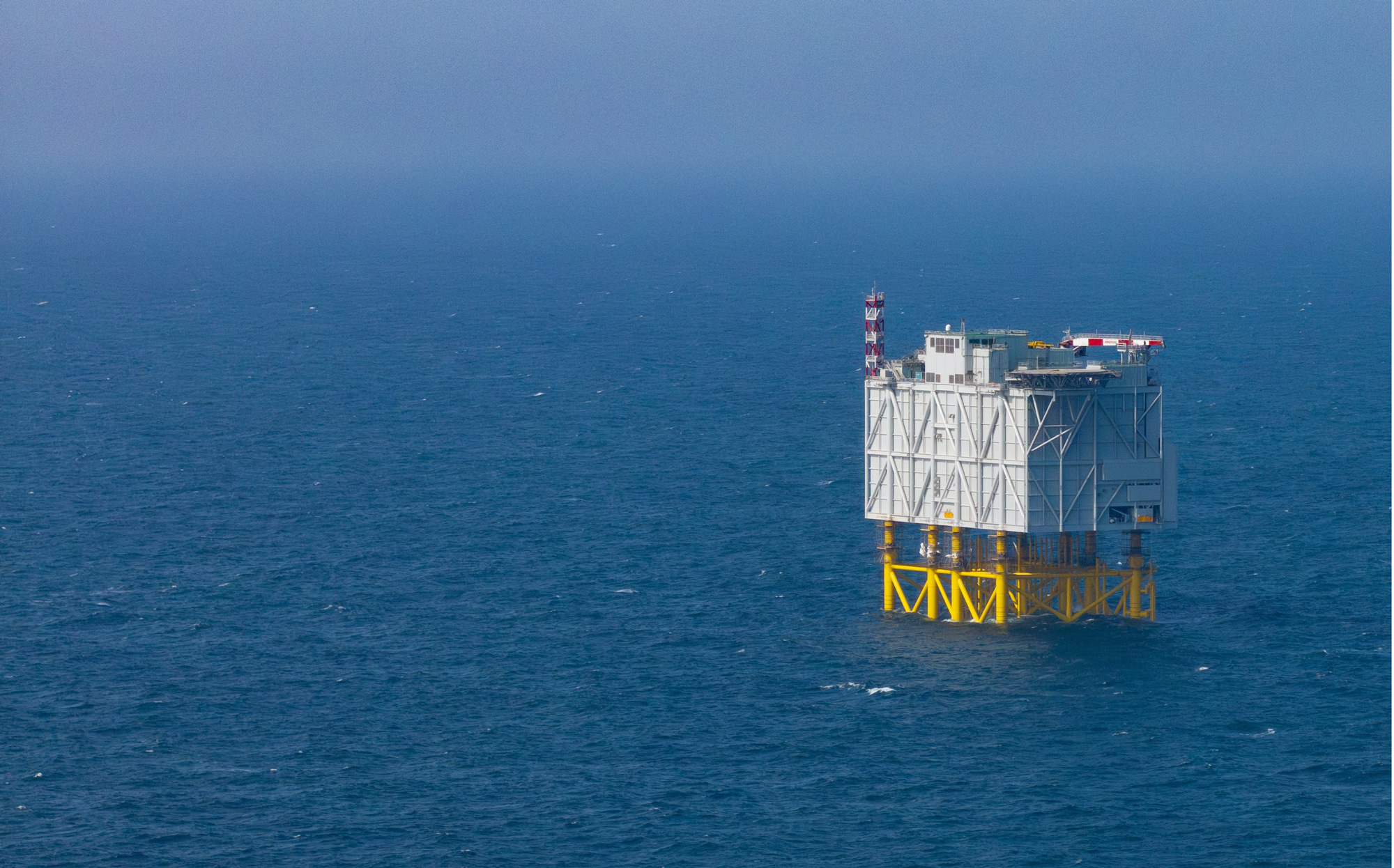Components of DBS
The DBS offshore wind farms underwent a detailed development phase beginning in 2021, culminating in a design submitted as part of the Development Consent Order (DCO) application in June 2024.
In January 2025, we submitted formal Requests for Change to refine the design of both the onshore and offshore infrastructure. On 21 January 2025, the Examining Authority accepted our refined designs into examination.
Note: Our interactive map is currently being updated to reflect the updated onshore substation zone details. In the meantime, the revised substation zone layout and boundary can be viewed in the Project Change Request 2 – Onshore Substation Zone Change Report on the Planning Inspectorate Website under reference AS-152.
Components of DBS
The proposed DBS offshore wind farms consist of key infrastructure components working together to generate electricity, transmit it to a National Grid substation and convert it for use by homes and businesses.
Wind turbine generators
The DBS projects include two offshore wind farms: DBS East and DBS West, each hosting 100 turbines, making a combined total of 200 turbines. The DBS West turbines would be located over 100 km from the northeast coast of England, while the DBS East turbines would be more than 122 km offshore.
Each turbine would have a maximum blade tip height of 394m above mean high water and a rotor diameter of 344m. The lowest blade tip would be at least 34 meters above sea level.

Proposed infrastructure for the DBS projects.

Graphic to show maximum dimensions of the proposed wind turbines
High voltage direct current (HVDC) transmission system
The DBS projects' electricity transmission system would include four HVDC converter stations — two offshore and up to two onshore.
The offshore converter stations would be located on platforms at the heart of the wind turbine arrays, while the onshore converter stations would be located in structures located to the southwest of Beverley, near the village of Bentley in the East Riding of Yorkshire. These onshore converter stations would convert the generated electricity to 400 kV before feeding it into the national grid via the proposed Birkhill Wood National Grid substation near Creyke Beck.

The DBS offshore converter stations would look similar to this one installed at Sofia offshore wind farm.
Offshore and onshore cables
Offshore, turbines would deliver electricity to the offshore converter station by inter-array cables. From here, electricity would be sent via offshore export cables to the landfall point on the coast at Skipsea. Both the inter-array and offshore export cables would be buried in the seabed.
At the landfall, the offshore export cables would come ashore beneath the beach and connect to the onshore export cable at a transition joint bay. From there, electricity would be transmitted to the onshore converter stations via 32km of underground export cable.
Foundations
The 200 wind turbines and the three offshore platforms (two converter stations and one accommodation platform) require foundations. Seabed investigations are being conducted to inform engineers about the site conditions, guiding the best foundation design for each offshore structure.
Temporary construction compounds
To facilitate construction, temporary compounds and access points will be used and removed after completion. At certain locations, horizontal directional drilling (HDD) will allow onshore export cables to pass beneath features like rivers, roads, or hedgerows, without surface disruption.
For more detailed information about the projects and the assessments conducted during development, please refer to the Non-Technical Summary.
.jpg)
Graphic to illustrate how the offshore export cables come ashore under the beach and connect with the onshore export cables at the transition joint bay.
Other pages you might be interested in
Current status
Learn more about the stages of examination that DBS will go through
About RWE and Masdar
In February 2024, RWE and Masdar joined forces to deliver DBS.
Keep in touch
Get in touch and ask questions with our project team